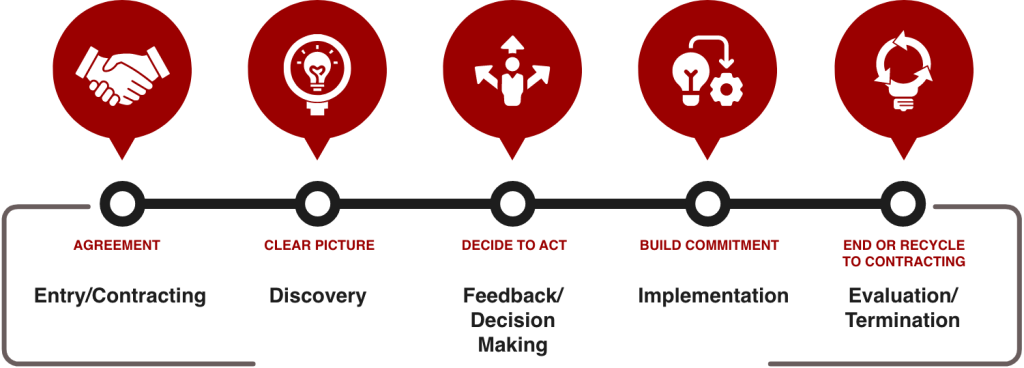by Beverly Crowell
What do we say about saying no in Flawless Consulting?
In a recent conversation, a client said, “My company values relationships. I worry saying no might hurt the relationships I am trying to build.” Hearing that, I asked, “So, what kind of relationships does your company value? Only those where you agree?” A relationship is a way two or more people are connected. It is also the way they behave toward each other. From our client’s perspective, “saying no” is no way to behave. Peter Block, author of Flawless Consulting: A Guide to Getting Your Expertise Used, says this about the problem of saying no.
Internal consultants especially feel they are taking tremendous risks if they tell line managers that they would be better off terminating a project. Despite the risk, it is in your and the client’s best interests to refuse projects that do not have a reasonable chance for success. When you are stuck in contracting with a client, it is because both of you feel that if you don’t get your way, the project will not succeed. If you go ahead with a project you don’t believe in, you run the risk of failure. The reason to terminate projects is not because of consultant petulance, or pickiness, or the desire to engage only in exotic and professionally stimulating work. The reason to say no is to avoid failure. You will also avoid the waste of your resources and your future credibility with other opportunities.
Give more value to your yes.
Another reason to stay open to the possibility of saying no to a client is that you are trying to manage the relationship with the client in a way that you would wish the client to manage relationships with people in their organization. Saying no says that we have limits, that we have a right to declare boundaries and decide on our own what we commit to. If we cannot say no, then yes loses its meaning, and commitment also is taken off the table. We become programmed to say yes. After a while do not know when the yes is sincerely felt or simply born of institutionalized habit.
If you can’t usually say no to a client, there are still some choices for you. For example, you can minimize your investment of time and hope to keep your potential losses down. The easiest way to do this is to postpone the project. Say, “I am willing to go ahead with the project as you have requested, but I suggest that we begin it in eight months.” By this time, this manager may have moved on to another job, or you might have moved on to better things.
If you can’t postpone the project, minimize the scope of the job and the time it will require. Narrow the objectives of the project. Do what you can to reduce the visibility of the project and reduce the drain on your time and energy. The key is to be honest with yourself about the limitations of the project.
So, be realistic about unattractive projects.
Be clear with your boss and others that the project is beginning on shaky ground, that you would rather not proceed, but that you feel you have no choice because you can’t afford to say no to this client. Or, the corporate program is in your hands. Then, do the project in a low-key way.
The critical point to consider is whether it is really in your best interest to go ahead with a project. It may be better to live without the project and not having “converted” that client than to begin a project that might fail. If you pull back from one client, perhaps that client will be angry with you and feel rejected. But you lost only one client. If you proceed with a project that you think might fail and, in fact, it doesn’t go well, you are in bigger trouble. The client is going to tell five other managers how disappointing the project was and how it failed. Now you are in the hole with six managers instead of only one. It is just not good for business to take on low-chance-of-success projects.
Saying no in relationships can be a good thing as long as it is done with respect, honesty, and compassion. It can help you and your clients grow as individuals. Ultimately, it may lead to a stronger partnership where each is trusted, valued, and appreciated. It can also be better for you.
What kind of relationship do you want with your clients?
In a recent Mind Matters article from the Mettinger Clinic, they say the following, “Saying no can create more mental health stability by helping with self-care and build your self-esteem and confidence by setting boundaries. Saying no may be daunting, but there are ways to do it.” One of those ways includes setting healthy boundaries, which we call “wants and offers” in Flawless Consulting. Ultimately, we teach others how to treat us based on what we are willing to accept or not. Never say no, and your clients will always expect yes.
So, what kind of relationship do you want with your clients?
Want more information on how to build the consulting skill of saying no? Check out our Flawless Consulting® workshop based on the international best-selling book.
